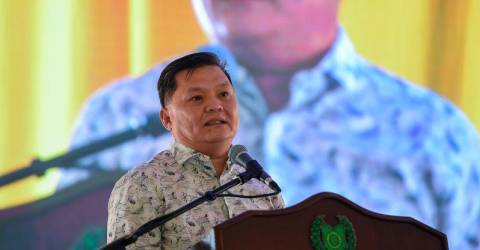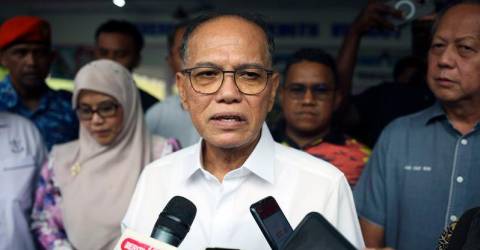ADVERTISE HERE

Photo for illustration purposes only. — Photo by Flo K/Pixabay
KOTA KINABALU (Dec 26): The crocodile population in the rivers of Sabah is believed to be still at a healthy level despite the current measure by the authorities to cull large-sized crocodiles for safety purposes, according to a zoologist from Universiti Malaysia Sabah’s (UMS) Institute of Tropical Biology and Conservation.
Prof Dr Abdul Hamid Ahmad said that Sabah’s large network of rivers, lakes, and ponds as well as its coastline provided a suitable habitat for crocodiles, and the population had increased since they were protected from mass hunting in the 80s.
He said such habitats as well as areas protected from human disturbance had also provided conducive breeding grounds for the species, resulting in more births than deaths thus leading to an increased population.
“In addition to protecting crocodiles as a natural treasure, their population can also be managed with the aim of providing economic returns, especially to surrounding residents, like in Australia and the United States,” he told Bernama.
He said surrounding residents could usually recognise the presence of the large reptiles and are experienced in avoiding attacks but negligence and the lack of facilities and safety equipment could still cause crocodile attacks, with the larger ones able to catch bigger victims.
“There are no specific guidelines to avoid crocodile attacks. People must be careful and use tools or structures to protect themselves such as building jetties and using boats,” he said, adding that studies showed crocodile attacks often occurred when victims were in or at the edge of the water, usually early in the morning or at dusk.
In a two-year study from 2017 to 2019, the Sabah Wildlife Department managed to record 2,886 crocodiles in 10 rivers. This study is conducted every 20 years to assess the population of crocodiles in the state.
The saltwater crocodile is a protected species in Sabah, and in 2016, Malaysia moved the crocodile’s status from Appendix I to II, with hunting in the wild permitted only in Sarawak and a zero quota hunting of wild specimens for the rest of Malaysia.
Meanwhile, Danau Girang Field Centre director Prof Benoit Goossens said the authorities should set a quota to avoid detriment to the overall population if crocodile hunting licences were given to the public for safety reasons.
He said the culling or killing of large, mostly male crocodiles in a river system due to human-crocodile conflict, could potentially create ‘power vacuums’ where other males moved in to replace the dead ones.
“I believe that culling of individual crocodiles deemed dangerous to the public could be undertaken under the strict control of the Sabah Wildlife Department, to prevent any escalation of shootings, which might include the young.
“Although Australia harbours the largest crocodile population, the number of attacks is very limited compared to Indonesia and Malaysia, because there is sufficient public awareness and education campaigns,” he said, adding that there should be signs installed in areas where crocodiles were present.
Goossens said he had visited 10 rivers in Sabah between 2017 and 2019 to research crocodiles which also helped him to author a book titled “Opogi: A Bornean Crocodile”.
The 88-page book, published in 2019, is about a one-year-old male crocodile named Opogi living in the Kinabatangan River in the interior of Sabah.
Goossens said he aimed to provide readers with some basic knowledge about the behaviour of crocodiles and their habitat.
He said, unfortunately, researchers were currently uncertain about the actual crocodile count in Sabah, apart from the 2,886 recorded in the latest data from the 2017 to 2019 survey in 10 rivers.
“This survey also found the Lower Kinabatangan Wildlife Sanctuary harbouring the largest portion of the state’s crocodile population estimated to be 1,368,” he said.
He said these results suggested that in the last 20 years, there was no substantial evidence of an increase in the overall population size of crocodiles in Sabah and therefore, it was an unlikely determining factor in any increased reports of human-crocodile conflict.
“The absence of their favourite prey, the bearded pig, following the recent African Swine Fever outbreak in Sabah is likely to be the reason for an increase in crocodile attacks,” said Goossens. — Bernama

 1 year ago
132
1 year ago
132



 English (US) ·
English (US) ·